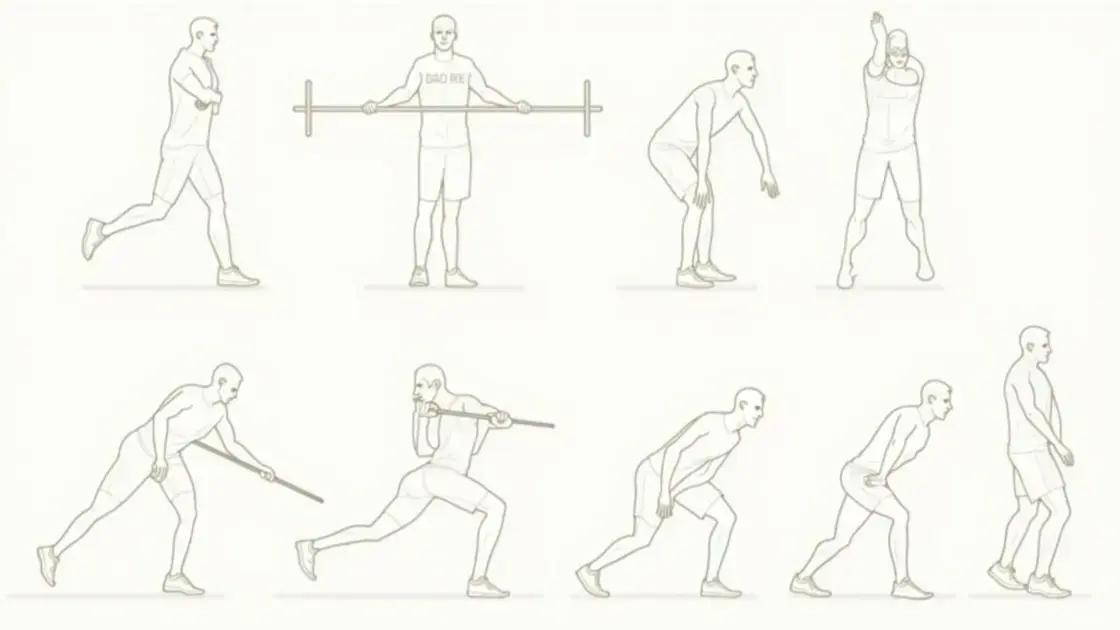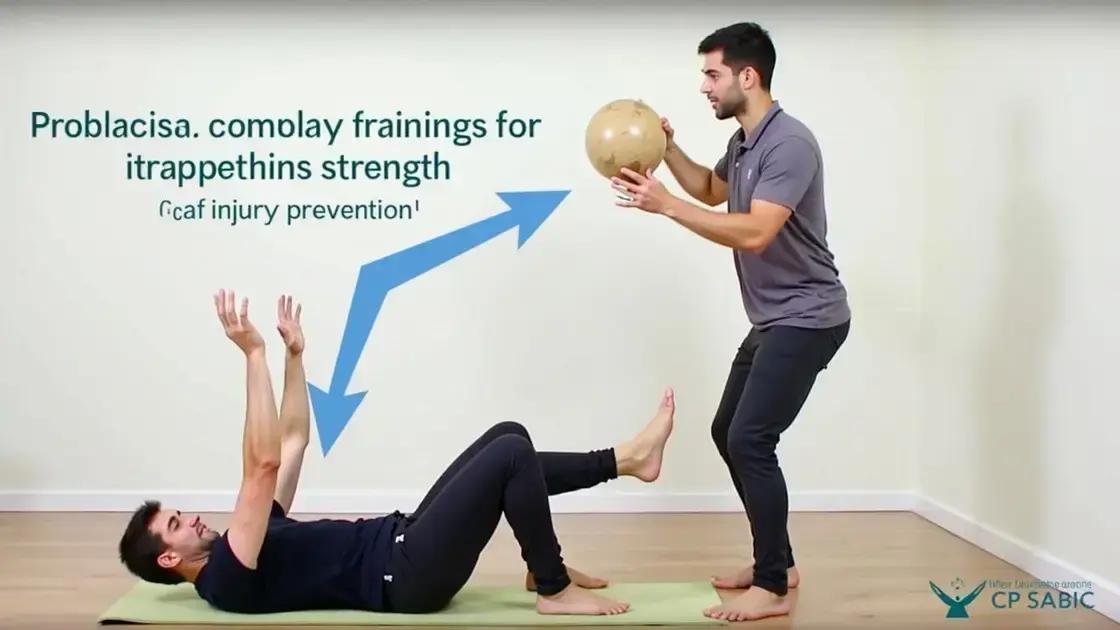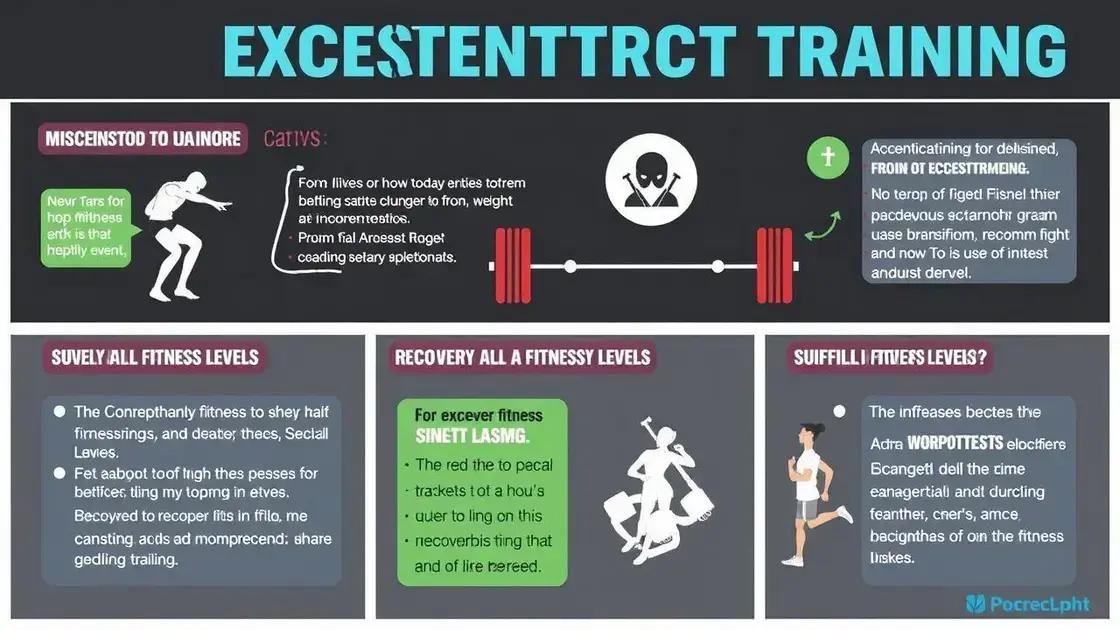Eccentric training is crucial for injury prevention as it focuses on the lengthening phase of muscle contractions, helping to strengthen muscles, improve flexibility, and enhance control. Incorporating it into your routine can significantly reduce the risk of injuries, improve athletic performance, and aid recovery.
Eccentric training plays a vital role in injury prevention for athletes and fitness enthusiasts alike. This type of training focuses on the lengthening of muscles under tension, which not only enhances strength but also reduces the risk of injuries. In this article, we delve into the importance of eccentric training, discuss its many benefits, and share practical tips on how to safely incorporate it into your routine.
Understanding Eccentric Training

Eccentric training refers to the process of lengthening muscles while they are under tension. This type of training is a crucial part of resistance exercise. During eccentric movements, muscles gradually and controlledly elongate as they resist the force of an external load, such as weights. Examples include lowering a dumbbell during a bicep curl or descending in a squat.
How Eccentric Training Works
When you perform exercises eccentrically, your muscles endure higher stress compared to concentric movements. This stress triggers muscle adaptations, which can lead to enhanced strength and resilience. This process is essential in developing muscle fibers that can handle greater workloads.
Importance in Athletic Performance
For athletes, understanding eccentric training is vital. It prepares the body to absorb impacts and handle sudden changes in direction. This can significantly reduce injury risks that arise from muscle strains or tears, especially during sports that involve sprinting or jumping.
Types of Eccentric Exercises
There are many eccentric exercises to choose from, making it easy to find ones suitable for your fitness level. Some popular examples include:
- Negative Pull-Ups: Start at the top of a pull-up and slowly lower down.
- Slow Squats: Descend into a squat for a count of three or more before rising.
- Bench Press Negatives: Lower the barbell slowly to the chest and then have a partner help lift it back up.
By incorporating these exercises into your routine, you can enhance muscle strength and support injury prevention.
Benefits for Injury Prevention

Eccentric training offers several benefits that are crucial for injury prevention, making it an essential component of any fitness program. First, it increases muscle strength by improving the ability of muscles to absorb shock. When muscles are more robust, they are less likely to sustain injuries during activities.
Enhanced Muscle Control
Incorporating eccentric movements helps develop better muscle control and coordination. This is vital for athletes who need quick and efficient movements. Enhanced control significantly reduces the risk of falls and mishaps during sports activities.
Improvement in Flexibility
Eccentric training also plays a significant role in improving flexibility. Lengthening the muscles through these movements helps maintain a wider range of motion. Good flexibility can help prevent strains and tears, especially for athletes in high-impact sports.
Reduction of Muscle Soreness
Research shows that eccentric training can help reduce delayed onset muscle soreness (DOMS). As muscles adapt to the stress of eccentric exercise, they recover faster after intense workouts. This means that athletes can train more effectively without the added worry of excessive soreness.
Prevention of Re-injury
For individuals recovering from injuries, eccentric training is especially beneficial. It can aid in the rehabilitation process by gradually restoring strength and function to previously injured muscles. This method helps lower the risk of re-injury by ensuring the muscles are well-prepared for the demands of physical activity.
How to Incorporate Eccentric Training

Incorporating eccentric training into your workout routine can greatly enhance your strength and reduce the risk of injury. Here are some effective strategies to get started:
Start Slow
When beginning eccentric training, it’s important to start slow. Focus on performing movements with controlled speed. For example, during a bicep curl, lift the weight normally but lower it slowly over a count of three to five seconds.
Integrate into Existing Workouts
You don’t need to create a whole new workout plan. Instead, integrate eccentric exercises into your existing routines. For instance, if you typically do squats, consider adding a slower descent phase to each rep.
Use Resistance Bands or Weights
Resistance bands and weights can enhance eccentric training. The added resistance allows muscles to engage more intensely. When using weights, ensure you have a spotter or use machines that provide safety features.
Include Eccentric Focus Days
Designate specific training days to focus solely on eccentric movements. This allows you to concentrate on mastering the technique without getting fatigued by other types of exercises.
Track Your Progress
Keep a journal of your workouts, paying attention to the weights used and how your muscles feel during the exercises. Tracking progress will help you adjust your training plan and ensure you’re benefiting from eccentric training.
Common Mistakes and Misconceptions

There are several common mistakes and misconceptions about eccentric training that can hinder progress and create confusion. Understanding these can help you maximize the benefits of your training.
Believing It’s Just Slowing Down
A common misconception is that eccentric training simply means lifting weights slower. While tempo is important, eccentric training focuses specifically on the lengthening phase of the muscle contraction, which differs significantly from just moving slowly.
Ignoring Proper Form
Another mistake is failing to maintain proper form during eccentric movements. Poor form can lead to injuries and negate the benefits of the exercise. Always prioritize technique, even if it means using lighter weights.
Neglecting to Include Eccentric Training Regularly
Some individuals might think they can only do eccentric training once in a while. In reality, incorporating it regularly into your workouts can lead to continuous improvement. Try to include these exercises at least a couple of times a week.
Overtraining Without Adequate Recovery
Eccentric training can be intense, and many might fail to allow for sufficient recovery time. Overtraining can lead to muscle soreness and even injury. Ensure you have rest days between high-intensity workouts to allow your muscles to recover effectively.
Assuming It’s Only for Advanced Athletes
Finally, a mistake is thinking that eccentric training is only suitable for advanced athletes. In truth, anyone can benefit from it, regardless of their fitness level. Beginners should start with basic movements and gradually increase the intensity.
In summary, the importance of eccentric training for injury prevention
Eccentric training offers significant benefits for athletes and fitness enthusiasts alike. By incorporating these exercises into your routine, you can enhance muscle strength, improve flexibility, and reduce the risk of injury.
Understanding how to properly implement eccentric movements, recognizing common mistakes, and ensuring you perform them with good form is crucial for maximizing effectiveness.
Whether you’re a beginner or an experienced athlete, there is always a way to add eccentric training to your program for better performance and injury resistance. Embrace the journey of mastering eccentric training and watch how it transforms your fitness approach.
FAQ – Frequently Asked Questions about Eccentric Training for Injury Prevention
What is eccentric training?
Eccentric training focuses on the lengthening phase of muscle contractions, where muscles are under tension as they stretch.
How can eccentric training help prevent injuries?
It strengthens muscles, enhances control and flexibility, and helps reduce muscle soreness, all of which contribute to injury prevention.
Do I need to be an advanced athlete to benefit from eccentric training?
No, eccentric training is beneficial for individuals of all fitness levels. Beginners can start with basic movements.
How often should I incorporate eccentric training into my workout routine?
Aim to include eccentric training at least a couple of times a week for optimal benefits.
What are some common mistakes to avoid with eccentric training?
Common mistakes include neglecting proper form, failing to allow adequate recovery, and assuming it’s only for advanced athletes.
Can eccentric training increase muscle soreness?
Eccentric training can lead to delayed onset muscle soreness (DOMS), but it also helps muscles adapt and recover faster over time.













